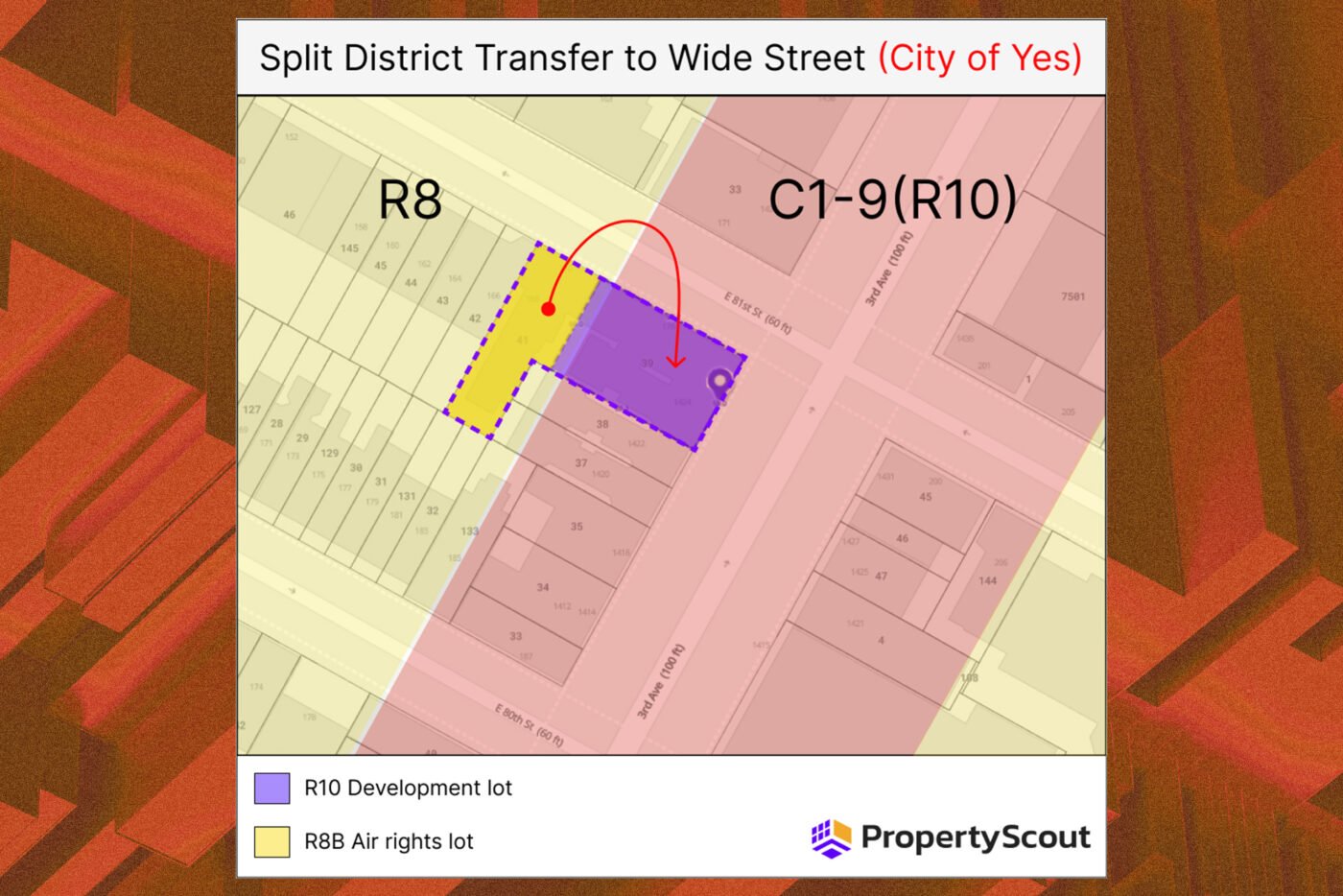New York City is witnessing a dramatic surge in development rights transfers as a result of the new City of Yes legislation.
What’s Driving the Surge
According to The Real Deal, transfers are projected to rise 39% in 2025, bringing them to their highest volume since 2016. At the heart of this shift is the City of Yes, passed last year, which dismantles many of the barriers that once made air-rights trading cumbersome or infeasible. Key changes include:
● Easier certification for transfers, especially from landmarked properties
● Expanded geography for where rights can be transferred (beyond immediate neighbors)
● More flexible zoning envelopes and rules for split districts
● Improved processes for Zoning Law Development Agreements (ZLDAs) and special district transfers

Developers can now buy unused air rights not just from adjacent parcels, but from side streets and even landmarked buildings over a much broader area.
The Numbers & Market Sentiment
● Projected increase: +39% year over year.
● Broker sentiment: Bob Knakal expects the actual increase to exceed projections — “by the end of the year it’s going to be triple what it was last year.”
● Liquidity effect: Where previously a landmark might have had 2–3 buyers for its unused rights, today it might have 30–40 potential buyers.
● Pricing: Landmark air rights are currently trading between $180–$400 per buildable square foot, with a common range of $200–$250 psf.
These price levels make it more financially viable to acquire additional buildable square footage, especially in Manhattan, where land values are extremely high. Landmark Transfers — From Bottleneck to Opportunity Before the City of Yes, transfers involving landmarked buildings were almost non-existent: only 15 such transfers in 50 years. The process required expensive special permits and involved extended public review.
Now:
● Certification timelines are dramatically shortened (6–9 months vs. years).
● Sellers can close first and let the buyer handle certification.
● The Department of City Planning initiates the process with the Landmarks Preservation Commission, shifting the burden away from sellers.
This opens up a vast pool: Manhattan alone has about 1,220 landmarked buildings south of 96th Street.

Why this Matters for Developers & Investors
● Greater scale with less friction: Projects can now absorb additional floor area via air rights instead of relying solely on lot expansion or deeper excavation.
● More options for assemblage: The ability to transfer rights across a wider area means developers can stitch together parcels more flexibly.
● Better risk calculus: The relative cost of acquiring air rights now is often justified by the additional revenue generated from expanded density.
● Market acceleration: Brokers and platforms (like PropertyScout) are seeing demand spike, with users hitting search limits and seeking more access.
Wilson Parry of PropertyScout captures the sentiment: “The assemblage game has totally changed.” Limits & Considerations Even with these legislative changes, air rights transfers aren’t a free pass to build unlimited density. Projects still must conform to height limits, setback rules, street wall requirements, and massing constraints. A comprehensive massing study remains critical to understanding how many of the acquired rights can actually be used.

Conclusion
City of Yes doesn’t just loosen restrictive rules — it reorients the economics and mechanics of development in New York. What was once a niche, cumbersome process is now scaling rapidly, injecting liquidity and opportunity into previously underutilized air-rights markets. For any developer, investor, or property owner, the message is clear: the assemblage game has changed for good. Reach out today to see how we can bring you the most competitive, cash-flowing deals in New York City.
This article is adapted from reporting by The Real Deal.


